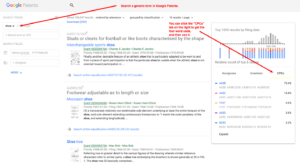Did your recent idea strike you like a lightning bolt? That revolutionary invention, the essential one that people are unaware they need, startled you awake at midnight, and in that instant, you realized, this is the one.
We’ve all been there! Invention and reinvention is what America is all about. It’s that entrepreneurial spirit that makes this country so great. I’ve run through the same thought process described above more than a few times. And it’s a common scenario that I hear frequently on calls.
But not so fast, there are a few different factors to consider before you start dreaming about what upholstery pattern you’re going to get in your brand new jet. I’m not saying it can’t happen, but creating, patenting, and launching a successful invention is a huge task. It’s not as simple as just getting a patent, and even filing a patent itself is a complicated process.
In this article I’ll outline two strategies for filing a patent. This process wouldn’t be the same as someone charging for this service would do. But it should help you begin to gauge the uniqueness of your idea, before you attempt to go further in patenting your invention.
There are many successful inventors out there, but what many first time inventors don’t realize is that going from an idea to a successful product is a huge endeavor. Even if you haven’t heard of an idea, someone may have already patented it.
How to Start You Patent Search
Now let this serve as a disclaimer, doing a patent search is complicated. Many patent attorneys offer patent searches as a service, as do I, and there are even professionals and companies that specialize in it. Through years of experience every attorney will have their own process and favorite tools for patent searches. But it’s not just about digging into wether something has been done before, but how the entire scope of similar and related inventions might affect your filing and especially how examiners will look at that information.
In this article, I’ll lay out what you need to know about about the variety of resources out there that can aid in your patent search needs: how to access them, how to navigate them, and the pros and cons of each. I’ll begin this article by moving through the avenues laid out by the USPTO, and follow up by focusing on the top web tools for patent searches. The task of searching for a patent can seem daunting, but with the help of this article, you will have an understanding of how to get started.
The “Un-Official” Way to See if Your Invention has Been Patented
Here’s a basic process that I recommend to new inventors or entrepreneurs just trying to get a sense of the market. Getting excited about your idea is important, but making sure nothing has come before it is also important.
For starters:
- Brainstorm some basic terms that describe your invention. Think about what it does and how it does it, as well as the materials it’s made of, or how you’d describe something similar to it. These related terms can help you gauge wether your idea is already in existence somewhere else.
- Next do a basic search using Claim Parse or Google Patents While not the official route, either service should give you in depth information about the item your thinking of. A thorough search on either service should turn up any ideas similar to your own, especially if you did a good job coming up with terms in step #1.
- If #2 turned up nothing look up the problem your idea is solving. By simply Googling a topic you might find a related product or solution that’s exactly what you’re proposing. Even Pinterest or Reddit could reveal wether something already exists. Generally anywhere people are having conversations about issues might help you find something similar to your idea.
- If step 3 turns up nothing I’d recommend searching sites like Amazon, The Grommet, KickStarter, Product Hunt and Indigogo. If your idea exists somewhere, it will probably be on one of these sites.
- If you do find you need to speak with a patent attorney to know for sure. But you can search the company name, or inventors name to see if they hold a patent on it.
Now if you find something in the above steps that looks similar to your idea it doesn’t mean it’s been patented, but it may also affect patentability. Again a patent search can only turn up so much unless you have the years of experienced required in patent law to really understand what the existing patent documents out there mean, and how patent examiners might interpret them.
The “Official” Way to Search for a Patent
Now why do I say official? Well for the first time inventor the below steps might be overkill. If you’re simply trying to figure out wether a product has been done before you reach out to an attorney then the “unofficial” process I describe above might be better. Now if you’re an experienced inventor or looking at something in the software of technology realm that’s more complicated, the below process will probably be necessary.
The USPTO website lays out a 7-step guide for running a preliminary patent search using their tools and tools of their European partner, the EPO. Their recommended approach focuses on patent classification searches. Their instructions help you brainstorm terms to search within USPTO website to determine your proposed patents potential Cooperative Patent Classification, and then instruct you in the use of various databases to search patents and patent applications that might legally cover your idea. Click to access the USPTO’s 7-step U.S. Patent search strategy guide handout or the associated computer based training tutorial CBT (computer based training) tutorial with a detailed review of the Seven Step Strategy.
The process is roughly as follows:
Step 1) Start by brainstorming specific terms that describe your invention. Work backwards from the problem it solves and how it’s made. Try to create a list of terms other people would use to describe its purpose and composition.
Step 2) Then Use these terms to find some relevant Cooperative Patent Classification patents. If you enter “CPC Scheme [plus keywords(s) describing invention]” into the search box you should begin to find related inventions. For example if you’re trying to patent a new kind of shoe, searching something like “CPC Scheme shoe” should show some relevant inventions. You could also

Step 3) You can than verify the quality of your search by reviewing the CPC Classifications definition linked to the patent you’ve found.
Step 4) You can then gather patent documents on the PatFT (Patents Full-Text and Image) database . From here you can narrow down the search terms you’re using by going through abstracts and looking at drawings to narrow your search further. Patterns should begin to emerge. At this point you might just find exactly what you were trying to patent, or something similar. Now that said, these things are still open to interpretation and it may still be worth speaking with a professional if you’re serious.
Step 5) Even if you don’t find a smoking a gun you should dig into each of the most related patents and gauge their similarity to yours. Looking at references cited by them or the patent examiner can be a boon for important related patents.
Step 6) Now retrieve published patent applications with the CPC classifications you chose in Step 3 using the AppFT (Applications Full-Text and Image) database. Use the same process I outlined above to narrow down your inventions.
Step 7) Finally broaden yours search to find any additional U.S. patent publications by searching related terms brainstormed in Step 1 within the PatFT, AppFT databases, and non-U.S. patents on the European Patent Office’s Worldwide Espacenet patent database. Finally double check the disclosure of inventions using the Patent and Trademark Resource Center. Since that will also affect your invention.
Here’s a full list of resources recommended by the USPTO, linked to their descriptions on the USPTO website:
- USPTO Patent Full-Text and Image Database (PatFT)
- USPTO Patent Application Full-Text and Image Database (AppFT)
- Global Patent Search Network (GPSN)
- Patent Application Information Retrieval (PAIR)
- Public Search Facility
- Patent and Trademark Resource Centers (PTRCs)
- Patent Official Gazette
- Common Citation Document (CCD)
- Search International Patent Offices
- Search Published Sequences
- Patent Assignment Search
Now, you can imagine how complicated the above can get…
It’s only a quick introduction, but the two methods I’ve outlined in this article should help get you started, and at a minimum help you identify if your exact idea has already been done.


1 comment
Nial
Can’t tell you many times I’ve gotten into building a crazy idea in my garage before realizing that it has been done!! Thanks for this resource, now I won’t get started before doing a few searches!